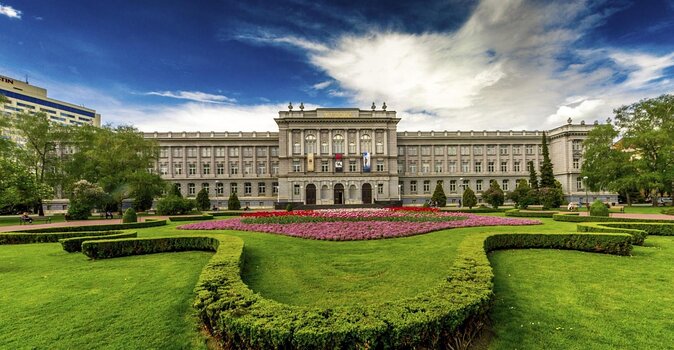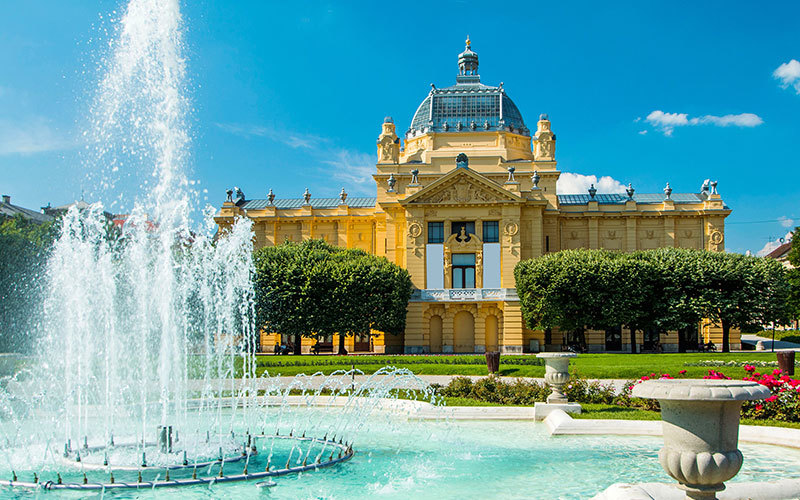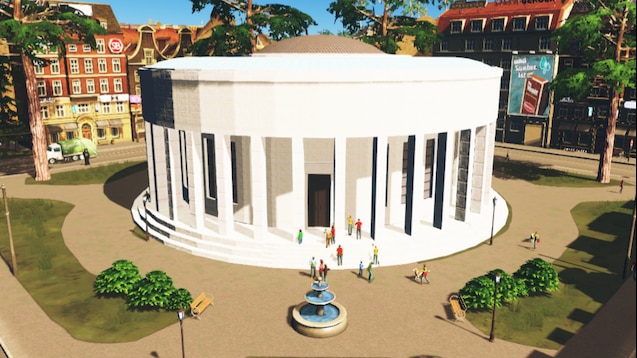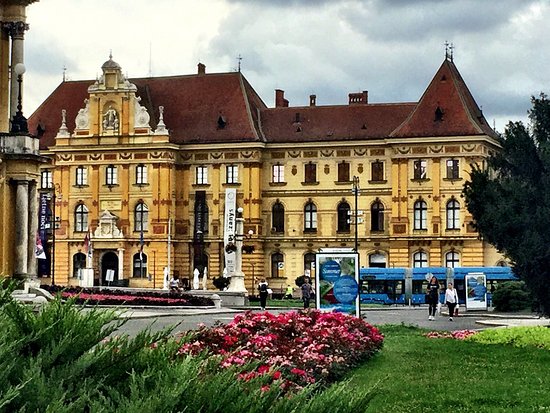Something that Zagreb may be globally compared or regionally envied, is, above all its continuous museological evolution and the present museum internal competitiveness

Mimara Museum
Age of Pericles for the Zagreb Museums began in the mid-80s of the last century through the transformation of the high school building on the Roosevelt Square at the time, to become the seat of the future collection of the private assemblage of collector Ante Topić Mimara (1898-1987), which he donated to the state as his permanent legacy. Mimara was a painter, restorer and a significant collector on a European scale, where he lived throughout the continent until returning to Zagreb, to donate 3500 items of classical archaeology, paintings, and sculptures as well applied artworks ending with oriental and Chinese art heritage.
Glyptotheque HAZU
For the Glyptotheque of the Croatian Academy of Sciences and Arts, we can freely say that it is early anticipation, what is today the global museological trend, a transformation of industrial constructions heritage into spaces dedicated to museums and creative industries. Founded in 1937 as Gipsoteka (gypsumtheque), it is actually the foundation of the Croatian sculpture of the 19th and 20th century, with 11,000 exhibits, since 1940, housed in the building of the former leather factory of Kožara.
Art Pavilion

The building was erected in 1898, at the initiative of the most noteworthy not only the Croatian, but also the most beloved South Slavic painter Vlaho Bukovac, and as the premier space of future representative exhibitions, by ingenious relocating of the cast-iron structure of the Croatian Pavilion from the Millennium Exposition in Budapest to the Zrinjevac Park, that is King Tomislav Square. For decades in continuity, it is a privileged space for promoting retrospective exhibitions and art cycles

Home of HDLU
The home of the Croatian Association of Visual Artists, known as Meštrović, has been initially in recent past used as a modernist gallery space, then during World War II served as a mosque, and finally as a Museum of Revolution. Architecturally structured in the shape of a rotunda, in our time and literally has come full circle, returning to its original purpose through the monumental and multimedial exhibition dedicated to Nikola Tesla as the so-called “Mind from the future” his life presented in an interactive installation of films and animations have been an exhibition of the year 2017-18.
Klovićevi Dvori Gallery
Klovićevi dvori is the largest gallery – museological institution in Croatia. It is located within four floors of the former monastery from the 17th century, which was in 1982 converted into a Museum that holds the highest exhibition and program standards and therefore has the highest number of visitors to this day.
Museum of Contemporary Art
MSU Zagreb, the largest new implemented museum project of the previous decade in the SEE region, is founded in 1954. The present building, just like the institution itself in the Vjećeslava Holjevac Avenue on 15,000 m2 having 3,500 m2 of exhibition space in the past, it held some of the biggest events such as the retrospective of Kožarić, Richter, Srnec and Picelj.
Museum of Arts and Crafts

MUO is not only the oldest but by a content most important museum in Zagreb today. Through the generations of the following different and significant managers came to the position of the last year’s “60s in Croatia” exhibition as the largest – most significant anthropological museological event, making it a probable museum of the year, unavoidable in the realization of this year’s similar program ambitions, too.